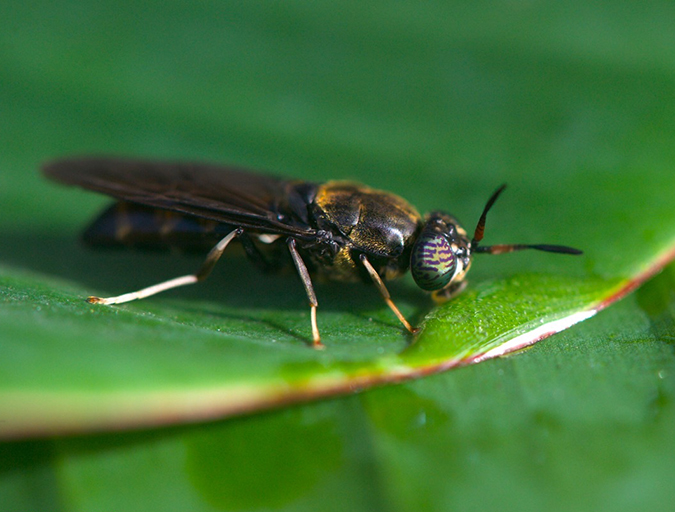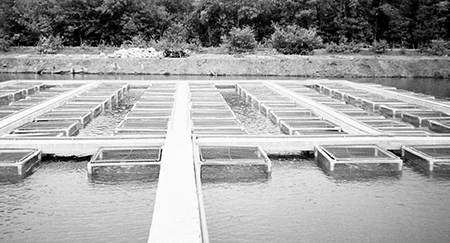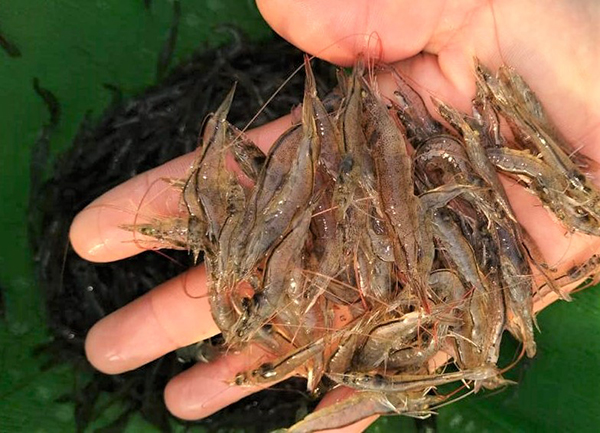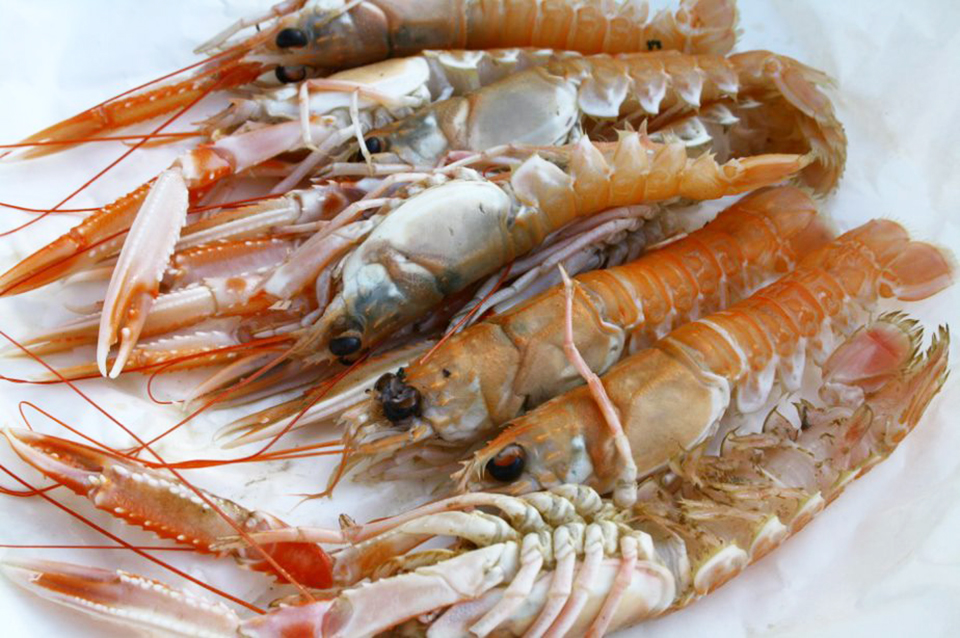Study investigates the effect of feeding different black soldier fly larvae meal size fractions

Recent investigations have looked at the use of insects as a fish feed ingredient given that insects are part of the natural diet of several fish species. Additionally, insects generally contain a high protein content, although this varies depending on the insect’s diet, life stage and species. One insect species that seems particularly promising is the black soldier fly (BSF, Hermetia illucens) whose larvae can convert a wide variety of low-quality organic matter into larval biomass. BSF larvae are relatively high in crude protein (31 to 59 percent dry matter, DM) and crude lipid (11 to 49 percent DM) and their meal has an amino acid profile more comparable with fishmeal than most plant-based ingredients. Its high nutritional value makes black soldier fly larvae meal (BSFLM) of interest as an alternative fish feed ingredient.
For several fish species, black soldier fly larvae meal (BSFLM) has been successfully incorporated as a feed ingredient, including Atlantic salmon at 10 to 20 percent dietary inclusion, Nile tilapia at 1 to 10 percent dietary inclusion, and rainbow trout at 20 to 40 percent dietary inclusion). However, other studies found that growth performance was repressed with dietary inclusion of BSFLM, including turbot at 6.5 to 75.6 percent dietary inclusion and rainbow trout at 6.6 to 26.4 percent dietary inclusion. These seemingly contradictory results could be due to differences in BSFLM inclusion levels, replaced protein sources and BSFLM quality. The quality of BSFLM depends, among others, on processing procedures, protein content, amino acid profile and chitin [a complex sugar and the primary component of the exoskeleton of crustaceans and insects] content.
Chitin has been hypothesized by some studies to have a potential negative impact on fish performance and nutrient digestibility. The chitin content in BSF larvae is approximately 5.4 to 9.0 percent on a DM basis, and despite several studies on chitinolytic activity [chitin degradation by various intestinal enzymes], it remains unclear which fish species can digest chitin and to what extent. Even with indications of chitin impairing fish performance, very few studies have examined how to potentially improve the applications of BSFLM in fish feed by reducing the chitin content.
This article – summarized from the original publication (Eggink, K.M. et al. 2022. Chitin digestibility and intestinal exochitinase activity in Nile tilapia and rainbow trout fed different black soldier fly larvae meal size fractions. Aquaculture Research, 00, 1–11) – presents the results of research to investigate whether sieving can be used as a simple mechanical method for chitin fractionation and to study the effect of different BSFLM size fractions on nutrient digestibility and the activity of an intestinal enzyme in Nile tilapia (Oreochromis niloticus) and rainbow trout (Oncorhynchus mykiss).
Study setup
To investigate the effect of chitin on nutrient digestibility and chitinase activity in fish, BSFLM with different chitin contents were tested as feed ingredients for Nile tilapia and rainbow trout. Juvenile Nile tilapia (~8 grams) were obtained from Til-Aqua (Someren, the Netherlands) and transported to the trial location (Technical University of Denmark, Hirtshals, Denmark), where they were maintained on a commercial diet until reaching a mean body weight of ~40 grams. A total of 144 fish with a mean body weight ± SD of 41.2 ± 1.7 grams were distributed in 12 identical tanks (189 liters) mounted in a flow-through mass balance system. The fish were acclimated to the tanks and feed each diet in three randomly assigned tanks.
Juvenile rainbow trout (~50 grams) were obtained from Refsgård Fiskeri (Egtved, Denmark) and transported to the same trial location. After quarantine, the fish were handled as described for the tilapia and 216 fish with a mean body weight of 70.9 ± 1.0 grams were distributed in the 12-tank mass balance system at a stocking density of 18 fish per tank, feeding each diet to three randomly assigned tanks.
A batch of BSF larvae was reared on a mixture of chicken feed and plant-based byproducts at ENORM Biofactory A/S (Flemming, Denmark). The larvae were harvested 12 days post-hatching and mechanically separated from their substrate, washed, partially defatted (using mechanical pressing without solvents), dried and ground into a meal. The partially defatted meal was mechanically sieved by a commercial company (Engsko, Randers, Denmark) into three size fractions with particle sizes 0 to 200 μm (fine), 200 to 400 μm medium), and >400 μm (coarse), with 1.8, 2.7 and 15.4 percent chitin on a DM basis, respectively. Four isoenergetic and isonitrogenous diets were formulated for each species including an experimental reference diet and three diets replacing 25 percent of the experimental reference diet matrix with one of the three BSFLM size fractions.
For detailed information on the experimental system and design, and fish husbandry; experimental diets preparation; sample collection, analytical methods and statistical analyses, refer to the original publication.
Meta-analysis of the effects of black soldier fly meal on fish growth
Results and discussion
Ours is, to our knowledge, the first study investigating sieving as a method to reduce the chitin content in BSFLM. Before sieving, the chitin content in the BSFLM was 7.9 percent DM, which is similar to that reported in other studies ranging from 5.0 to 8.0 percent DM. After sieving, two of the fractions (fine and medium) had a lower chitin content (1.8 percent and 2.7 percent DM respectively) compared with the initial content, while the third fraction (coarse) had a higher chitin content (15.4 percent DM). However, size fractionation not only affected chitin content but also the content of other nutrients including corrected crude protein, amino acids and lipids.
The different nutritional composition of the meals after sieving could be due to the assumingly higher amount of exoskeleton in larger meal fractions, which has a lower lipid content and different amino acid profile when compared with the larval inside. As BSFLM is considered an alternative protein source in fish feed for replacing soybean meal and fishmeal, for example, it is important to compare the crude protein content and amino acid profile with that of the ingredients it would potentially replace.
The crude protein content of the partially defatted BSFLM fractions ranged from 549 to 559 grams per kg DM, which is between the reference values for soybean meal (494 grams per kg DM) and fishmeal (675 grams per kg DM). However, the crude protein content in BSFLM was calculated using a standard nitrogen-to-protein conversion factor of 6.25, resulting in an overestimation due to the presence of non-protein nitrogen, including chitin. Pure chitin contains approximately 6.9 percent nitrogen and when adjusting for chitin nitrogen, the crude protein content decreased to 493 to 545 grams per kg DM.
Considering the amino acid profile, previous studies have found that insect meal from the order Diptera (including BSF) has an essential amino acid (EAA) profile similar to that of fishmeal. However, in our study, all three BSFLM fractions had a lower EAA content compared with the reference value for fishmeal, and the coarse BSFLM also had a lower content compared with the reference value for soybean meal. These results suggest that the BSFLM fractions obtained by sieving would not be able to completely replace fishmeal as a protein source while the fine and medium fractions have the potential to replace soybean meal. The coarse fraction, however, may not be able to replace either protein source due to the low crude protein content after correction for chitin and the unbalanced amino acid profile.
Dietary inclusion of the coarse BSFLM led to a lower protein digestibility in both species compared with the inclusion of the other two BSFLM fractions, even after correcting for chitin nitrogen presumable due to the higher chitin content in this meal. A possible explanation for the decrease in protein digestibility, as well as that of other nutrients, might be that chitin binds to digestive enzymes. In addition, insect chitin is embedded in a matrix of other components including proteins, lipids and minerals, and this could impair the accessibility of digestive enzymes to these nutrients. However, these suggested mechanisms require further investigation in fish to identify the role of chitin as an antinutrient.
In our study, the activity of the exochitinase enzyme was present in both tilapia and trout and its activity seemed to increase with higher dietary chitin inclusion. The presence of chitinases in the feed is unlikely while it could be possible that the exochitinase activity derived from chitinolytic bacteria in the far end intestine. However, a previous study in rainbow trout showed that antibiotic treatment did not affect chitinolytic activity, suggesting that the bacterial contribution to the chitinolytic activity is minimal and that most of the activity is produced endogenously.
Perspectives
The results of our study showed that sieving could be used as a simple mechanical method to obtain BSFLM fractions with different chitin contents. However, the applied sieve sizes did not allow complete separation of the chitin fraction. Therefore, we recommend further work on further reducing (or removing) chitin in BSFLM in a sustainable manner, focusing, for example, on using other sieve sizes, mechanical exoskeleton removal or enzymatic extraction.
We also determined that both Nile tilapia and rainbow trout can digest chitin and could potentially use chitin as a nutrient source. However, their capacity to digest chitin decreased with higher dietary inclusion of chitin. Further research is needed to identify the role of different chitin enzymes in chitin digestion in different fish species, as well as their overall capacity to digest chitin.
Additionally, our study showed that the dietary inclusion of the coarse BSFLM size fraction resulted in reduced digestibility of certain nutrients, presumably due to the anti-nutritional properties of chitin. However, modes of action in which chitin acts as an antinutrient remain to be investigated.
Now that you've reached the end of the article ...
… please consider supporting GSA’s mission to advance responsible seafood practices through education, advocacy and third-party assurances. The Advocate aims to document the evolution of responsible seafood practices and share the expansive knowledge of our vast network of contributors.
By becoming a Global Seafood Alliance member, you’re ensuring that all of the pre-competitive work we do through member benefits, resources and events can continue. Individual membership costs just $50 a year.
Not a GSA member? Join us.
Authors
-
Kylian Manon Eggink
Corresponding author and Ph.D. student
DTU Aqua, Section for Aquaculture, The North Sea Research Centre, Technical University of Denmark, Hirtshals, Denmark -
Per Bovbjerg Pedersen, Ph.D.
DTU Aqua, Section for Aquaculture, The North Sea Research Centre, Technical University of Denmark, Hirtshals, Denmark
-
Ivar Lund, Ph.D.
DTU Aqua, Section for Aquaculture, The North Sea Research Centre, Technical University of Denmark, Hirtshals, Denmark
-
Johanne Dalsgaard, Ph.D.
DTU Aqua, Section for Aquaculture, The North Sea Research Centre, Technical University of Denmark, Hirtshals, Denmark
Tagged With
Related Posts

Aquafeeds
Buggin’ out: Tapping the potential of insect meal in aquaculture
Black soldier flies are gaining interest as a leading alternative ingredient in aquafeeds. But will the “ick” factor be a turn-off? Advocate contributor Clare Leschin-Hoar investigates.

Health & Welfare
Carotenoid supplements and WSSV
The effectiveness of carotenoid supplements will depend upon the severity of infection and other stress factors that affect the condition of the shrimp.

Health & Welfare
Evaluating digestibility and performance of insect meals in diets for Pacific white shrimp
An assessment of seven insect meals demonstrates their high potential as protein sources to replace fishmeal in diets for L. vannamei.

Innovation & Investment
Plastic 2.Ocean: Seafood packaging, made from shellfish
A new type of chitosan-based bioplastic, made from shellfish shells, emerges as a potential solution for global food waste and marine plastic pollution.



